Affiliate disclosure: This post may contain affiliate links. Please see our Privacy Policy.
Marshmallow usually conjures up images of fluffy white confections, but these tasty treats started out as medicine! While store-bought treats no longer contain the actual marshmallow plant, herbalists continue to use marshmallow tincture as a gentle, cooling, and soothing remedy. Internally, marshmallow is a potent herb for treating coughs, sore throats, and respiratory problems. Externally, it’s great for treating various skin issues. Gathering a few simple ingredients can allow you to create this traditional remedy.

Marshmallow’s mucilaginous roots make it the perfect herb for soothing sore throats, coughs, and other respiratory complaints, and it’s an excellent natural herbal remedy for cold and flu symptoms.
Though they weren’t exactly like the ones we picture today, the first marshmallow confections were probably created by the Ancient Egyptians. Mixing the pounded roots with honey, they produced soothing treats for upper-class members of society with throat, chest, and respiratory complaints.
Marshmallow is a fun plant to forage for and to grow in the garden. Depending on where you live, you may find Marshmallow (Althea officinalis), Russian Marshmallow (Althea armeniaca), or Palm-leaved Marshmallow (Althea cannabina).
You may already have a “marshmallow” growing in your flowerbeds! Hollyhocks (Althea rosea) are a marshmallow species, and most herbalists agree they share the same medicinal properties. However, their roots can be a bit tougher and more difficult to process.
Growing other marshmallow species is similar to growing hollyhocks. They also share the plant’s beautiful flowers and look right at home in an ornamental garden.
Marshmallow (Althea officinalis) is a hardy perennial that will return each year. They prefer full sun but will tolerate partial shade and thrive in wet locations with regular moisture. In the wild, it’s common to spot them on river banks.
You can start marshmallow from seed or get divisions or cuttings from a friend or garden swap.
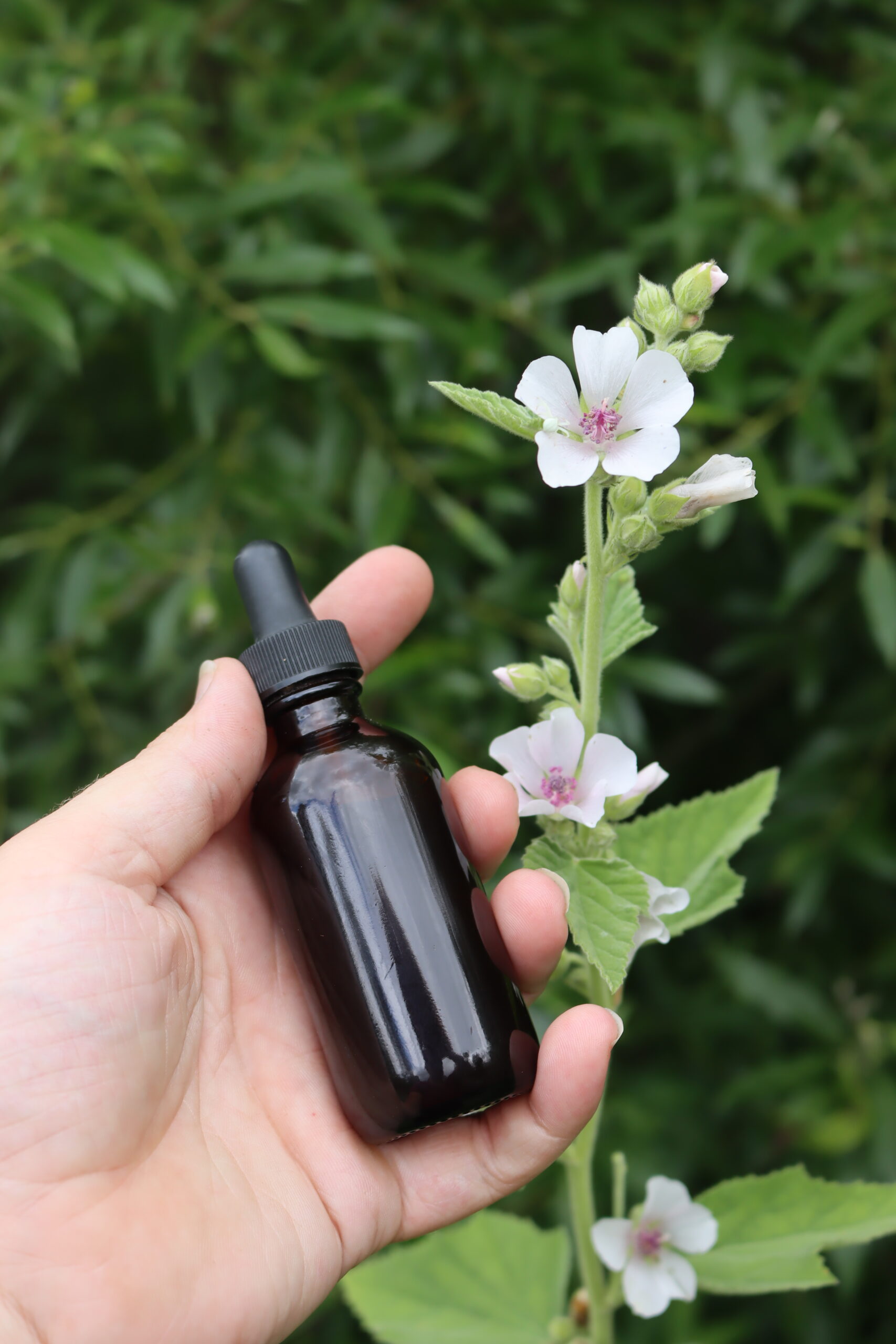
Marshmallow Tincture Uses
Herbalists use marshmallow tincture both topically and internally to treat a variety of ailments.
Topically, marshmallow tincture is used for:
- Treat Dermatitis
- Promote Healing of Minor Burns and Wounds
- Soothe Dry, Irritated Skin
Internally, marshmallow tincture is used to:
- Soothe Coughs and Sore Throats
- Treat Respiratory Infections and Viruses
- Boost the Immune System
- Relieve Digestive Issues
Additionally, the herb is currently being investigated for its potential:
- Support Heart Health
- Anti-Cancer Properties
In these cases, research is ongoing, and more work is needed to establish whether or not the benefits are scientifically significant.
Benefits of Marshmallow Tincture
Records from ancient Greece, Rome, and Egypt provide a long historical record of the medicinal use of marshmallow roots. The plant’s Latin name tells a similar story. Althea comes from the Greek ἀλθαίνειν (althainein), meaning “to heal.” The second part, officinalis was used in medieval Latin to denote plants and other organisms used in medicinal or culinary preparation.
Many of these ancient record marshmallow as a medicine for chest, lung, and throat complaints. Herbalists of modern times still use marshmallow much the same way, and scientific research is furthering our understanding of this use.
A scientific review from 2020 found that marshmallow root is an effective treatment for dry coughs. It also found that when combined with other herbs like ginger (zingiber officinalis), common ivy (Helix hedera), and zataria (Zataria multiflora), marshmallow root can help treat sore throats, wet coughs, and other respiratory symptoms.
In more recent research, marshmallow root was found to help treat the symptoms of coronavirus in children. A 2022 study treated two groups of children with coronavirus. Group one received the standard treatment and an herbal mixture, including marshmallow root. Group two received just the standard treatment. Researchers found that the herbal mixture reduced the amount of time patients reported a sore throat in 93.2% of patients. They also noted that after ten days, sore throat persisted only in 6.8% of group 1 (herbal group) and 68.1% of group 2 patients.
Herbalists also use marshmallow root for stomach and digestive complaints. A 2023 study found that marshmallow root in yogurt improved the antioxidant activity and intestinal barrier in colon tissue cells better than other herbs. This could help patients suffering from leaky gut and intestinal barrier dysfunction.
Marshmallow’s soothing properties extend to the outside of the body. A 2020 study found that marshmallow root ointment was more effective than hydrocortisone in treating atopic dermatitis in children. Marshmallow may also be effective on burns, too. A 2021 study found that it accelerated the healing of second-degree burns in mice.
Researchers are also investigating using marshmallow extract as a supplement to support heart health. In a 2011 study, they found that marshmallow flower extract had a positive effect on lipemia, platelet aggregation, inflammation, and HDL cholesterol levels.
Marshmallow is an incredibly safe and mild herb, even for children. While doses vary with the intended use, generally taking 1 to 1 ½ dropper fulls up to 3 times per day is recommended for adults. The tincture can also be dabbed or sprayed on external issues as needed.
Parts Used for Tincture
Generally, herbalists focus on the mucilaginous marshmallow roots when making tinctures. The roots contain the soothing properties we look for when treating sore throats, intestinal barriers, and irritated skin.
However, the entire plant can be used and may have other value. Many herbalists choose to mix some of the leaves or flowers with their tinctures. In scientific research, it’s the flowers that are looked at for heart health.
Ideally, you should harvest your marshmallow roots after the plant dies back in the fall. At this time of year, the plants have returned all their nutrients to their roots and converted some of their starches to sugar. The plants are also dormant, so it’s less damaging to dig and divide them during this period.
If you can’t find or grow fresh marshmallow, you can order dried marshmallow root online. I prefer Mountain Rose Herbs for medicinal herbs. It’s also acceptable to dry your own root for later use if you’re not ready to make a tincture immediately.
If you’re using fresh marshmallow roots or leaves, it’s best to chop or shred them. This creates more surface area, allowing the alcohol to absorb properly.
How to Make Marshmallow Tincture
To make a marshmallow tincture, you’ll need the following ingredients and equipment:
- Dried Marshmallow Root
- Vodka* (or any other palatable alcohol that’s at least 80 proof/40 percent — there’s no need to splurge here, I always use Smirnoff because it’s inexpensive and has a neutral taste)**
- One-pint mason jar with lid (amber glass is ideal, but as long as you keep the tincture away from light at all times, it won’t make a difference)
- Funnel
- Cheesecloth
- Fine mesh sieve
- Amber glass tincture bottles (with dropper) or spray bottles
*The Herbal Academy’s tincture-making course specifically recommends 25% alcohol for dried marshmallow root and leaf. If you’re using fresh root and leaf, they recommend 70 to 95% alcohol.
**Never use isopropyl/rubbing alcohol for tinctures (or any other remedy you plan on ingesting). Even in small amounts, this type of alcohol is toxic and meant for external applications only.
To begin, fill your jar about ¾ full with marshmallow roots or a combination of roots, leaves, and flowers or about ½ full of dried marshmallow roots.
Then, cover the marshmallow with alcohol. You want it to be well-covered, but it’s okay if some of the dried pieces float. Then, seal the jar with an airtight lid and place it somewhere cool and dark.
Your tincture will develop over the next 4 to 6 weeks. Ideally, you should gently shake it once daily.
After this period, it’s time to decant the tincture.
To do this, you’ll need to line a funnel with a few layers of cheesecloth or use a fine mesh sieve. Carefully strain the tincture into small amber glass tincture bottles, squeezing the roots and plant material to ensure all the liquid is expelled. We don’t want to waste any of this amazing medicine!
Once the tincture has been decanted, label the tincture bottles with the name, date, and suggested dosages (I use a small piece of masking tape and a marker; it peels off easily when I’m ready to use the bottle for something else).
Marshmallow Tincture Dosage
For the best results, I always suggest consulting a clinical herbalist. They can help you determine a dosage specific to your body and needs.
Generally, the recommended dosage for marshmallow tincture is 1 to 1 ½ dropper fulls up to 3 times per day. Externally, you can use it as needed. Spray or gently swab it onto the affected area with a piece of clean cotton or cloth.
Marshmallow Formulations
Marshmallow is effective on its own but often works best when paired with other herbs. For sore throats, coughs, and respiratory issues, researchers have found that ginger, common ivy, licorice root, slippery elm bark, and chamomile are excellent companions. You can also include some immune-boosting herbs like elderberry, self heal, and echinacea to encourage a quick recovery.
Chamomile is also a good option to use with marshmallow when focusing on digestive issues. Other options include ginger, peppermint, and fennel.
Externally, marshmallow pairs well with other herbs for skin healing, like calendula, jewelweed, and chamomile.
If you’re interested in the science behind combining herbs to enhance their effectiveness, I’d recommend taking this online course in Mastering Herbal Formulations from the Herbal Academy. It covers the science of blending herbs into homemade formulations in detail.
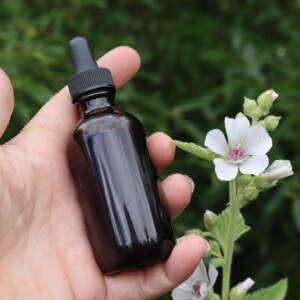
Marshmallow Tincture
Equipment
Ingredients
- Marshmallow Root Dried or Fresh
- Neutral Spirit such as vodka*
Instructions
- Begin by filling a clean mason jar about halfway (1/2) full with dried marshmallow root. Fresh marshmallow root is harder to work with for tinctures, so dried root is generally preferred and can be found at herbal supply shops.
- Pour your chosen alcohol over the dried marshmallow root, ensuring the roots are fully submerged. You can use vodka, brandy, rum, or any other high-proof alcohol (at least 60 proof or higher). This will effectively extract the beneficial compounds from the root.
- Securely close the jar with a lid and give it a gentle shake to mix the alcohol and the plant material. Place the jar in a cool, dark area, away from sunlight. Let the tincture infuse for 6 to 8 weeks.
- Every few days, give the jar a gentle shake to help the extraction process. Keep an eye on the alcohol level, topping it up if necessary to ensure the marshmallow root stays submerged throughout the infusion period.
- After 6 to 8 weeks, it’s time to strain your tincture. Line a funnel with cheesecloth and position it over a dark glass bottle. Pour the tincture through the cheesecloth, pressing the plant material to extract as much liquid as possible.
- Once the tincture is strained, transfer it to a clean, dark-colored glass bottle and label it with the plant name, date of preparation, recommended dosage, and any relevant usage instructions. Store the tincture in a cool, dry place, away from direct sunlight.
Notes
Disclaimer on Homemade Herbal Remedies
I’ve been foraging wild medicines and treating my family with herbal remedies for the past 20 years, but I’m self-taught. Be aware that I am not a clinical herbalist, and this is based on my own research and personal experience using medicinal plants. I do not claim to have the experience that’d qualify me to advise you on your health, and I’m only providing this as a reference to encourage a broader interest in medicinal plants.
Please use this as a jumping-off point, but always do your own research and verify anything you read with multiple sources.
It’s always possible to have an adverse reaction to any medicinal herb, and plenty of people are allergic to even gentle herbs like chamomile. Always consult your doctor or a certified herbalist before trying any new medicinal plant. Often, they can have unintended reactions in combination with other herbs and supplements, and many herbs have side effects even when they are effective for their intended purpose.
If you are seriously interested in herbal medicine, I’d suggest investing in a course in herbal medicine, and I’d recommend any of the online courses put out by the Herbal Academy of New England. Specifically, the introduction to herbal medicine course and the family herbalist group of courses.
They also have a mushroom course, covering both medicinal and edible mushrooms, and a Botany and Wildcrafting Course. I’ve taken both and they’re informative, inspiring, and artfully presented.
Herbal Tinctures
Interested in making other homemade herbal tinctures?
- Motherwort Tincture
- Chickweed Tincture
- Elderberry Tincture
- Dandelion Tincture
- Burdock Tincture
- Echinacea Tincture
Herbal Medicine Making
Herbal medicines don’t stop at tinctures! Learn how to make more homemade medicine…
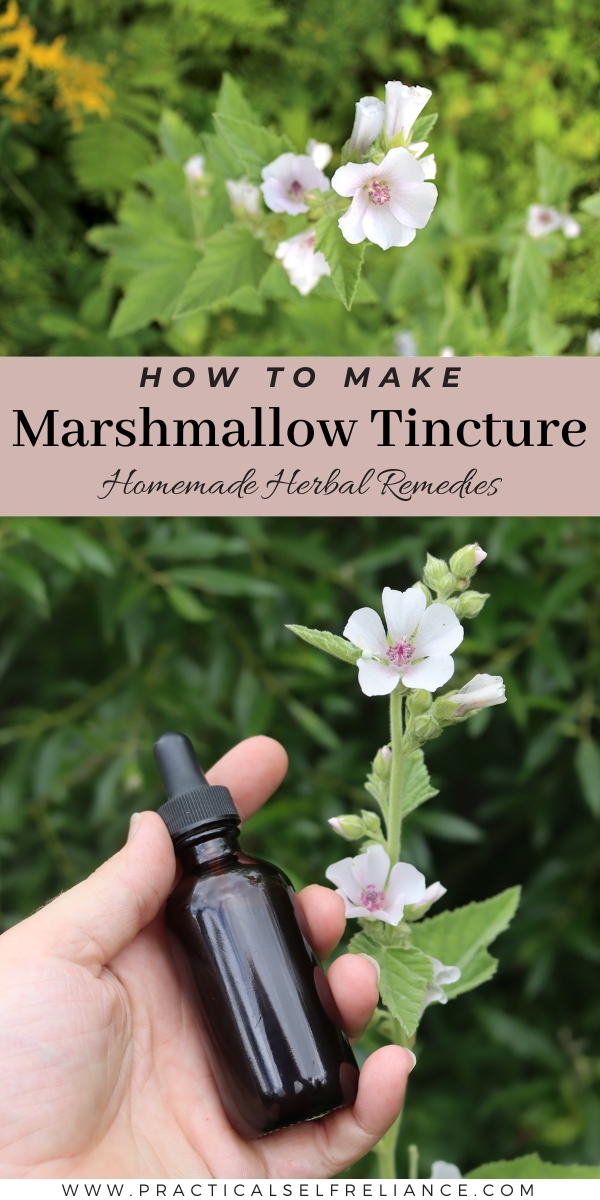
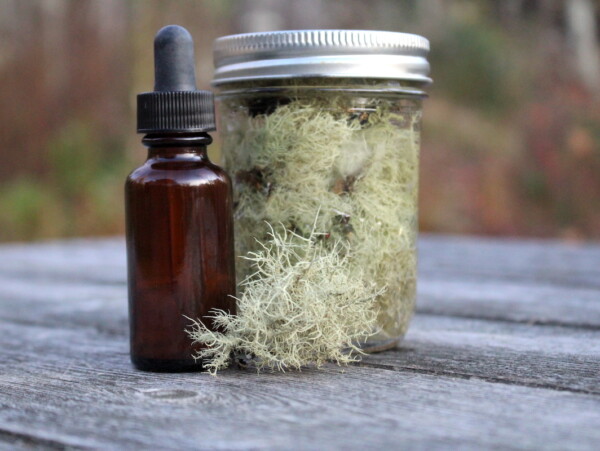
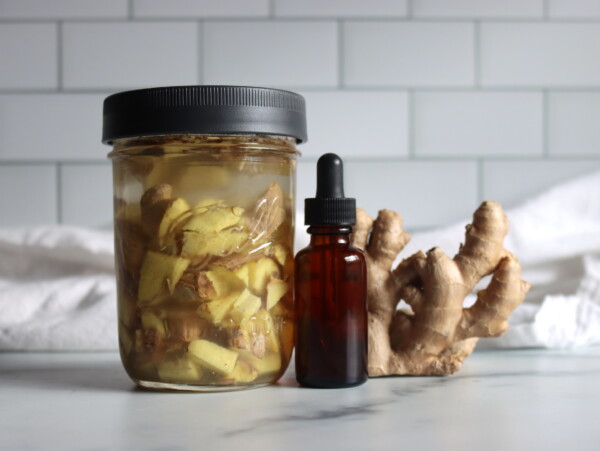
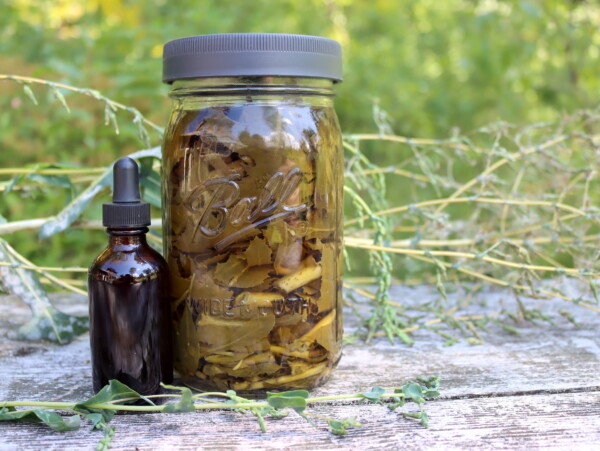
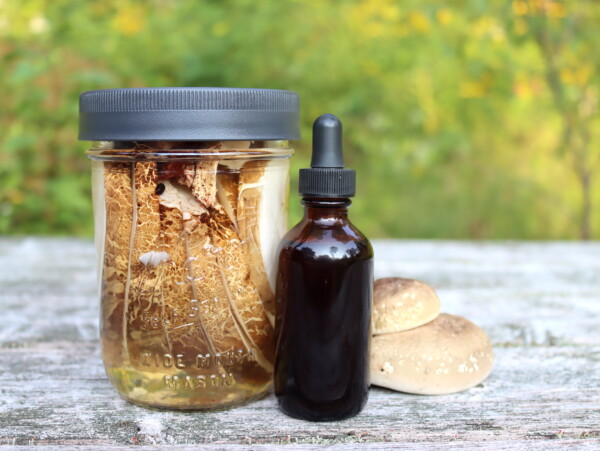










This was by far the best information I have found on common mallow! Thankyou so much for giving the information here! Super easy to follow and very intriguing to read!
Thanks!